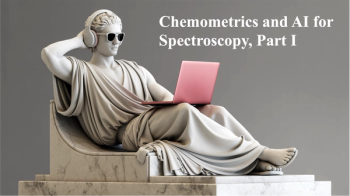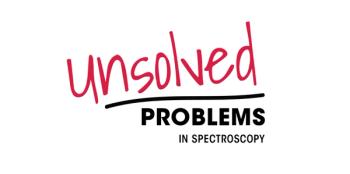
- Spectroscopy-07-01-2020
- Volume 35
- Issue 7
Atomic Spectroscopy: Is the End Near?
“It was a dark and stormy night…” Everyone should begin at least one paper, story, or other publication with that well-worn phrase. This was my chance.
“It was a dark and stormy night…”
Everyone should begin at least one paper, story, or other publication with that well-worn phrase. This was my chance.
Here, the phrase pertains to analytical atomic spectrometry, where the question is whether that field faces a dark future-stagnation, or even decline-or rather has much yet to offer the science and technology community. To be sure, methods such as inductively coupled plasma–atomic-emission spectrometry (ICP-AES), ICP–mass spectrometry (ICP-MS) and spectrometric methods with other sources such as direct-current (DC) arcs, high-voltage sparks, microwave-induced plasmas (MIPs), and glow discharges (GDs) have become workhorses in most analytical laboratories. However, the general perception is that this collection of methods can solve, at least adequately, virtually all problems currently facing science and society.
The result of this perception is especially apparent in the United States. There has been a steady decline in funding for atomic spectrometry among university faculty members. Whereas agencies such as the National Science Foundation (NSF), National Institutes of Health (NIH), Office of Naval Research (ONR), Air Force Office of Scientific Research (AFOSR), and Department of Energy (DOE) earlier had a stable of academicians in each pursuing path-breaking research in atomic spectroscopy, now there is almost none, save those doing applications-oriented work. In particular, I now know of very few who are performing studies involving instrumentation development or fundamental research. Those who still do must disguise their activities by promising future conquest of a fashionable application. Not surprisingly, this paucity of funding has virtually eliminated all faculty openings aimed at atomic spectrometry. More on this topic can be found in this issue in the paper by Richard Russo.
In former days, academic research in atomic spectroscopy was supplemented by (and benefited from) support and collaboration with scientists in industry. The early introduction and growth of atomic absorption and ICP-AES were examples of this success. In part, this growth was enhanced by competition among several instrument firms that offered ever-improving performance. Today, in contrast, acquisition and consolidation have reduced the number of firms that offer products to a finite market, so innovation is lower in priority. After all, why offer a new instrument that competes with an existing success?
The question then is whether the perception is correct. Is atomic spectroscopy good enough? Are there no significant questions yet to be answered? Are there no new instrument developments that can make a significant improvement in performance? Is there no emerging scientific or technological question that cannot be answered with current systems?
Perhaps a brief review of atomic spectroscopy history can help us answer these questions. Table I lists methods, sources, and instrumentation that were particularly prominent in each decade before 2020. It will be immediately obvious that some of them have remained in fairly heavy use (such as spark AES), whereas others (such as flame emission) have declined or virtually vanished. Let us explore why this is so.
Beginning with flame AES, it is clear that most of its adherents turned to flame atomic absorption spectroscopy (flame AAS) once commercial instrumentation for the latter became available; AAS offered relative freedom from spectral interferences and instrumentation that was simpler to operate. Similarly, flame AAS was supplanted in large measure by furnace AAS and, somewhat later, by ICP-AES, largely because of their better detection limits and, in the case of ICP-AES, for its simultaneous multi-element capability. For the same reasons, ICP-AES and the even more sensitive ICP-MS replaced many furnace AAS instruments. Beginning with another traditional method, DC arc AES, much of its workload was transferred to high-voltage (HV) spark-AES because of its higher precision, ease of automation, and slightly lower susceptibility to matrix interferences. In turn, many HV spark users converted to glow-discharge (GD)-AES because of its depth-resolution capability and even better precision.
In short, each atomic spectrometric method seemed to gain prominence early in its development, only to be unseated by another, usually newer, technique that was superior in one or more important figures of merit. To be sure, most of the methods remain important in niche applications (such as HV spark AES in the metals industry), but are no longer found in most routine-analysis laboratories.
Exceptions to this trend are ICP-AES and ICP-MS. Gaining prominence in the 1970s and 1980s, respectively, these two remain dominant to the present. Even more surprising is the fact that the ICP itself and its performance, especially for ICP-AES, have changed surprisingly little. Specifically, the classic 1969 paper by Dickinson and Fassel (1) features a pneumatic nebulizer and accompanying spray chamber, a desolvation condenser, and a three-tube ICP torch that supports an argon discharge, much like current systems. Even more startling is that the detection limits reported for a suite of elements are not greatly dissimilar from those claimed by modern manufacturers of ICP-AES systems!
Of course, there have been many other changes to ICP-AES instrumentation since 1969, especially to the spectrometric system. In those early days, most instruments employed sequential wavelength scanning or, at best, slew-scanning. Those relatively slow multielement approaches were later replaced with linear detector arrays or two-dimensional charge-transfer device detector arrays, which could examine the entire needed wavelength range at once. Similarly, many alternative sample-introduction options have been introduced, from special-purpose and high-efficiency nebulizers to alternative spray chambers, and from cold-vapor generation to laser ablation.
Similarly, ICP-MS instruments have benefited from a number of changes since their early days, including new sample-introduction systems like those used in ICP-AES, and also in the use of multicollector and high-resolution mass-scanned sector-field spectrometers. Improved vacuum interfaces have been introduced that now boast extraordinarily high efficiency, with one atom in each 1000 being detected, and vacuum systems are now less costly and more compact. Interestingly, some of these ICP-MS developments arose from partnerships between private-sector instrument firms and academic laboratories. However, few have involved universities in the United States.
To be fair, some commercial offerings in ICP-MS have derived from the U.S. academy. Examples include the ICP coupled with time-of-flight MS and with a sector-field MS equipped with a multichannel ion-detector array. However, neither achieved commercial success and neither of the original firms is currently engaged in marketing the instruments.
This somewhat gloomy background urges us to revisit the earlier questions. Is the ICP as good an emission or ion source as it can be? Are there no important unsolved problems in ICP-AES, ICP-MS, or the other atomic spectrometric methods? Are there no existing or potential application areas that cannot adequately be addressed with current atomic instrumentation? Are there no innovative ideas that can breathe fresh life into the area of atomic spectrometry?
In answer to the first question above, the conventional ICP suffers quite a number of shortcomings. It requires relatively large flows of high-purity argon and a great deal of radio frequency power. Both demands raise operating costs and make the ICP unsuitable for most in-field applications. Because large droplets cannot be fully desolvated and atomized in the plasma, a wasteful spray chamber must usually be used, which sends a large fraction of the sample solution to waste, and requires extended washout times and incurs potential memory effects.
In ICP-AES, detection limits are constrained by the extremely high and structured spectral background emitted by the plasma, necessitating the use of large, expensive spectrometers. Similarly, spectral lines are broadened extensively by the high-temperature, collision-rich plasma environment, so spectral interferences can be troublesome. Further, the ICP tail flame is an extremely heterogeneous environment, so the optimal vertical location to view emission differs from one element to another. Perhaps the most troublesome limitation, and despite claims by most instrument manufacturers, matrix interferences exist in ICP-AES that can cause errors of ±20%, unless complicated and time-consuming methods such as matrix matching, internal standardization, and standard additions are utilized.
In ICP-MS as well, performance needs improvement. Most importantly, almost all commercial instruments employ sequential scanning and thus sacrifice sensitivity on a multielement basis. They are also not particularly suitable for coupling with sample-introduction systems such as laser ablation, flow injection, electrothermal vaporization, or chromatography, all of which produce transient sample pulses. Such scanning systems also suffer limited precision because of their inability to overcome multiplicative (correlated) noise such as that generated by instability in the plasma, the sample-introduction system, and extraction of ions into the low-pressure zones of the instrument. Indeed, it is for this reason that multicollector sector-field instruments are employed for isotope-ratio measurements, albeit for only a few isotopes at a time. Even sensitivity is not as good as it might be in ICP-MS; only about 0.1% of the ions that enter the first vacuum stage are able to be “skimmed” for transmission into the succeeding vacuum stage. In fact, a simple calculation reveals that signals in ICP-MS are actually somewhat weaker than those in ICP-AES for the same sample concentration. It is only the high background level in emission systems that compromise their detection ability.
In addition to these current limitations in ICP technology, there are others that will arise in the future, given ongoing advances in other areas of science. Many of these advances have become apparent in the most recent decade (Table II). For example, a currently burgeoning area of application of ICP-MS is the analysis of natural and engineered nanoparticles. At least one commercial instrument is already being offered to address such problems, but, like most other ICP-MS units, it employs a scanned spectrometer, which limits the analysis to no more than a single element for each nanoparticle. Another example is on-site or remote analysis; for reasons given above, conventional ICP-AES or ICP-MS systems are not compatible with such needs. At present, laser-induced breakdown spectroscopy (LIBS) and laser-ablation molecular isotope spectrometry (LAMIS) offer the best hope. In the area of metallomics also, current capabilities fall far short; a much broader dynamic range and better sensitivity are both needed, as are instruments that can provide simultaneous information about both a protein or peptide and the elements associated with it. Recent and expected innovations in materials science also will not be met by current methods for atomic spectrometry; three-dimensional qualitative and quantitative analysis of solid samples will soon be necessary; depth profiling by glow discharge spectrometry will then not be adequate, and the eventual need for atomic-level spatial resolution and sensitivity will outstrip current capabilities completely.
At present, it appears that these shortcomings are being recognized and at least partially addressed, mainly by non-U.S. academic scientists and by smaller instrument firms. Constrained U.S. federal funding and a paucity of academic openings in the United States, and the NIH (Not Invented Here) syndrome in larger instrument companies are at least partially responsible. Most recent successful commercial innovations (such as ICP-time-of-flight-MS and ICP-based cell cytometry) came from other countries, and the centroid of strong academic research is shifting away from the United States.
Thankfully, there are encouraging aspects. A number of new concepts and instrumental innovations in atomic spectroscopy regularly appear. Meetings such as the highly regarded Winter Conferences in Plasma Spectrochemistry and the Nordic Plasma Conference on Spectrochemistry continue to be well attended and always feature new and unexpected advances. The two journals that emphasize atomic spectroscopy (Spectrochimica Acta, Part B and the Journal of Analytical Atomic Spectrometry) enjoy strong readership and high submission rates, and feature new instrumentation and methods, fundamental studies, and timely reviews. Recent reports address directly many of the shortcomings mentioned in the foregoing paragraphs. New awards for scientific progress in atomic spectroscopy have recently been introduced, and some are targeted specifically for younger workers in the field.
Still, on a worldwide basis, there is little academic funding or activity in instrument innovation or fundamental research. Support for “instrumentation science” is virtually nonexistent; any grants now available must be very closely coupled to a target application and available for routine use on an unrealistic time frame. Most new ideas or fundamental studies come from activities that are either not funded or arise from studies “bootlegged” from other sources of research support. Fortunately, there are many examples of this sort of success; they will not be listed here to avoid any complaints of favoritism or discouragement. Yet, the persistence of these pioneers is encouraging.
Clearly, the negative environment that faces atomic spectroscopy must change if current needs are to be met and future applications have a chance of being addressed successfully. As Sir Humphry Davy so famously said, “Nothing begets good science like the development of a good instrument.” Our funding agencies and instrument firms would do well to heed Davy’s advice.
Author’s Note
It is an honor to be able to participate in this special issue of Spectroscopy to commemorate its 35th anniversary. In this 35-year interval, a number of important changes have occurred in the field of atomic spectroscopy; the dire-sounding title chosen for this essay is meant to be attention-grabbing and not as a prediction.
Reference
- G.W. Dickinson, V.A. Fassel, Anal. Chem. 41, 1021–1024 (1969).
Gary M. Hieftje is a professor emeritus in the Department of Chemistry at Indiana University. Direct correspondence to
Articles in this issue
over 5 years ago
Vol 35 No 7 Spectroscopy July 2020 Regular Issue PDFover 5 years ago
Where Spectroscopy Is Headingover 5 years ago
A Further Leap of Biomedical Raman Imagingover 5 years ago
The Future of Portable Spectroscopyover 5 years ago
Light Matters . . . 35 Years of New Sources for Spectroscopyover 5 years ago
Single-Cell Analysis by ICP-MS—Current Status and Future Trendsover 5 years ago
When Size Matters: ICP-MS Detection of Small Objectsover 5 years ago
Atomic $pectroscopyNewsletter
Get essential updates on the latest spectroscopy technologies, regulatory standards, and best practices—subscribe today to Spectroscopy.




